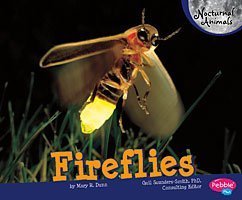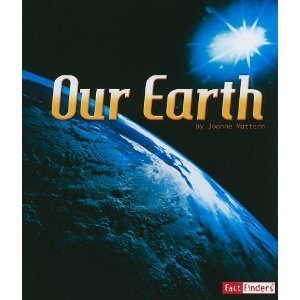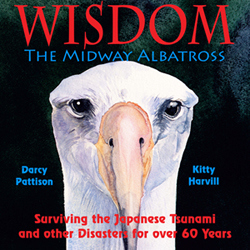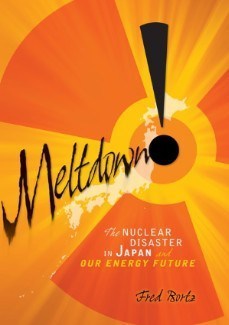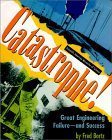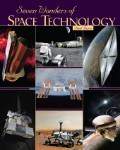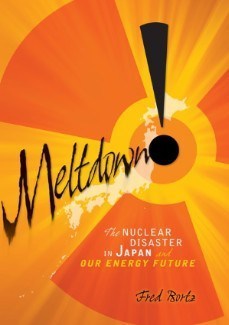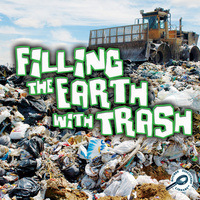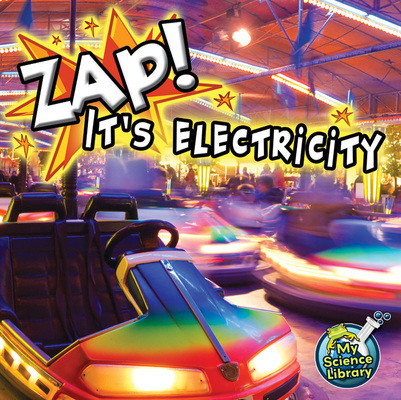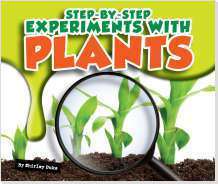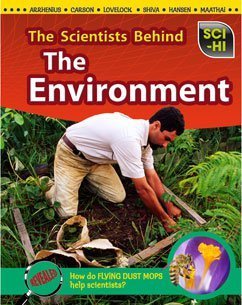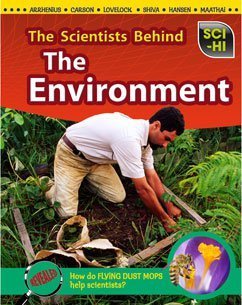Shirley Smith Duke's Blog, page 5
March 27, 2012
Fireflies
By Mary R. Dunn
Pebble Plus, Capstone, 2012
Nocturnal Animals Series
ISBN #9781429666497
Grades PreK-2
Nonfiction
"At night, fireflies rise from bushes and grass. These nocturnal beetles blink their lights in the darkness."
Warm summer nights lit by fireflies in the deepening dusk is a favorite childhood memory. Even now, I stop to marvel at the blinking lights of these fascinating beetles. What a wonderful way to introduce young readers to nonfiction!
Fireflies explains the life habits and life cycle of these blinking insects in a controlled vocabulary. It introduces terms relating to fireflies as a nocturnal insect but does so in the context so early readers can understand the meaning.
Large, close-up photos provide a good look at these insects, and the one of a female laying eggs is particularly interesting. The back matter includes a glossary, read more section, internet sites, and an index. The front cover is appealing with a lit firefly on it and makes the book appealing as a nonfiction choice. The book covers aspects of the Core Curriculum for informational texts with its map and close-up images and good back matter.
This book covers a terrific topic for beginning readers and is a great introduction to nonfiction reading. The timely approach to summer and these lovely reminders of summer evenings makes it a perfect seasonal book.
Activity
Use the information in the book to draw and label the life cycle of a firefly. Add to the diagram by showing the food eaten at various stages of development. Don't forget to show the bioluminescence!
The Texas A&M site has firefly information.
Here is a good example of a larva.
This site gives a brief description of the firefly life cycle.
This site has good background about fireflies.
National Science Standards: structure and function; growth and development of organisms
Book provided by Capstone








March 20, 2012
Our Earth
By Joanne Mattern
Capstone Press, 2011
Fact Finders Series
ISBN #9781429653954
Grades 3-6
Nonfiction
"We all call Earth home. Of all the planets and other bodies in the solar system, Earth is the only place that supports life. That makes our planet one of a kind!"
Our Earth introduces the planet we know so well in its place within our solar system. It continues with the formation of the solar system and the reasons Earth can support life. This first section explains orbit, axis, rotation, and revolution, and then begins to explore inner Earth.
The remaining chapters of the book fill in information about the land, the oceans, the atmosphere, and the biomes on Earth. The final chapter addresses photosynthesis, weather, and the water cycle, all parts of the processes that allow life to thrive here.
Our Earth is an excellent survey of our planet and a great introduction to each of these individual processes that take place. Photographs and diagrams add information and highlighted vocabulary is defined at the bottom of the page where it was introduced. The text is reader-friendly and the book has an appealing layout that shows the information well. Fun facts are sprinkled on some of the pages. Back matter includes a glossary, a read more section, Internet sites, and an index. Joanne Mattern does an excellent job with science subjects and it's a fun book to read. The book hits on a number of science concepts—all in one book. In all its complexities, who can get tired of reading about the Earth and its amazing processes?
Activity 1
Choose a topic from the book and find out more about that subject. You might want to investigate plate tectonics, the water cycle, the carbon cycle (not in book but interesting!), Earth's atmosphere, the moon, the Sun, or photosynthesis. Make your own poster or display to share the information you learned.
These links will get you started: tides, plate tectonics, water cycle, carbon cycle, Earth's atmosphere, photosynthesis, moon, Sun
Activity 2
Choose another planet. Then look up information about that planet and create a chart or Venn diagram to compare and contrast the Earth and that planet. This activity could be done as a group project, too.
NASA's site has planet information. Click on the planet and then go down to the read more tab.
National Science Standards: Earth and the solar system; Earth Materials and Systems; Plate Tectonics and Large-Scale System Interactions; The Roles of Water in Earth's Surface Processes; Weather and Climate
Book provided by Capstone








March 13, 2012
WISDOM The Midway Albatross
By Darcy Pattison
Illustrated by Kitty Harvill
Mims House, 2012
ISBN #9780979862175 paperback
Epub #9780979862175
Nonfiction picture book
Grades 2-5
I read Darcy Pattison's Fiction Notes (and Revision Notes) for several years and I met her last summer when we were on the Nonfiction Book Blast panel speaking at ALA. When I learned she had a new book out, I read it and enjoyed this well-written, fascinating story of an albatross who survived an amazing 60+ years and the trials of the recent Japanese earthquake and tsunami.
The book begins with the baby Laysan albatross as a chick. The bird grew up and in 1956 she mated, hatching her own chick. While she was on the nest, research scientist Chandler Robbins banded her. Over the years, the bird lived, ate, and flew, raising chicks each year or so. She outlived 87% of her rookery mates. In 2002, Robbins recaught the albatross and rebanded her in a red, easy to see band. She was also named Wisdom for her ability to survive against remarkable odds.
The writing is lively and flows well. A sort of refrain moves through the book about Wisdom's survival following lengthier text passages. The art is realistic and portrays the animals quite well. Pattison's ability to include more than one subject in her books is evident here while the true storyline is a heart-warming one. This fascinating tale of survival against odds is one listeners and young readers are sure to enjoy.
Activity
Look up the Laysan albatross and read about them. Then create a diagram that shows the life cycle of this bird that lives most of its life soaring over water.
National Geographic has information about the albatross in general.
The Midway Atoll National Wildlife Refuge has more about this albatross breed.
This site has information about the Laysan albatross and their Midway island nesting site.
See additional information about the book and albatrosses at Darcy's book site.
National Science Standards: growth and development of organisms; adaptations
Book provided by author.








March 6, 2012
MELTDOWN! Blog Tour with Guest Post by Author Fred Bortz
Thank you for joining SimplyScience for my first ever guest post by Meltdown! author Fred Bortz. Check out the schedule and stop by the other blogs where he will be featured.
Spellbinders Monday 3/5/12, plus giveaway Monday 3/19/12
Words at Work Monday, 3/5/12
SimplyScience Wednesday 3/7/12
USA Science and Engineering Festival Blog (perhaps on Huff Post) Wednesday 3/7/12
Writing with a Broken Tusk March 8
Liz Jones Friday 3/9/12
TFCB Blog Lerner Books Blog 3/12/12
Cynsations Giveaway 3/12/12
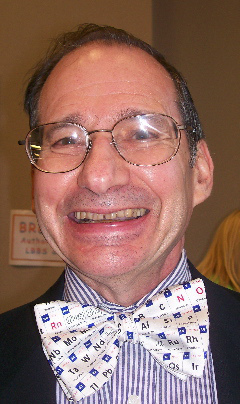 Love that periodic table of the elements bow tie!
Love that periodic table of the elements bow tie!
A Nonfiction Writer's Path:
Catastrophes, Meltdowns, Alien Encounters, and More
by Fred Bortz
People often ask me about my career path from working as a physicist to writing books for young readers. With my latest book, I can finally give a clever answer. If you skip ahead to the end, you'll find it. But I hope you'll read my story instead.
I grew up in Pittsburgh, PA, and stayed there for college, completing B.S, M.S., and Ph.D. degrees at Carnegie Tech / Carnegie Mellon University. I then began my career as an assistant professor at a branch campus of Bowling Green (OH) State University. After three years, I had an opportunity to do postdoctoral research on a topic related to my Ph.D. thesis with two renowned professors at Yeshiva University and New York University in New York City.
I loved the work there and produced a research paper that is still cited today. (Google "Bortz Kalos Lebowitz" and you will find it.) But after a year, my wife and I decided to return home to raise our two small children. Fortunately, Westinghouse Advanced Reactors Division was hiring, and my skill in advanced computation trumped my total lack of background in the nuclear field. I got a job working on the core design for an innovative nuclear reactor project.
After three years at Westinghouse, I found myself in a position that would repeat throughout my career. My employer understandably wanted me to become more expert in nuclear engineering, but I was finding other projects and other fields more enticing. I left Westinghouse, and for the next 19 years I moved from project to project at three different employers.
Meanwhile, I was beginning to sell stories and articles to children's and regional magazines. By 1990, I had published my first book for young readers. My engineer colleagues encouraged me to write a book to explain their field to that audience. But I couldn't find a hook until a 1992 lecture by noted engineer-author Henry Petroski, in which he discussed his noted book To Engineer is Human: The Role of Failure in Successful Design.
That was the theme I needed. I reworked it for young readers and expanded it beyond his focus on mechanical and civil engineering. The result was Catastrophe! Great Engineering Failure–and Success (1995). That book was named a Selectors Choice on the National Science Teachers Association list of Outstanding Science Trade Books for Children.
That selection came at just the right time for me. I needed to look for another employer and another project. This time, I decided the right employer was myself. As my own boss, I was free to explore any topic that interested me and share it with those most challenging of young people, adolescents. What could be better than that?
I discovered or rediscovered planetary science, paleontology, meteorology, geology, materials science, computer science, technology, and the scientists and engineers who followed the most fascinating questions and challenges in those fields.
No matter what topic I wrote about, my books were always driven by questions. ("Is there life on other worlds?" is one of my favorites, showing up most prominently in my 2008 "Cool Science" book, Astrobiology.) And for me, the best questions were always open ones.
I love leaving loose ends for my readers to reconsider when the time is right. For instance, my favorite chapter in Catastrophe! was about nuclear reactors. Despite nuclear meltdowns in Pennsylvania and Ukraine, I knew that the nuclear industry could bounce back and that my readers would have to make difficult political choices about it as adults.
Looking ahead to that time, I laid out the arguments they would hear on both sides of the issue and concluded: "Coming to the right decision then will be no easier than it is now, nor will it be any less important."
I was right. After the Fukushima disaster last year, the same questions about the future of nuclear power arose but with greater urgency than ever. Within weeks, I recognized that it was time to revisit that chapter of Catastrophe!, this time in book length. I wrote a proposal for my twentieth book, Meltdown! The Nuclear Disaster in Japan and Our Energy Future, and my editor at Twenty-First Century Books promptly accepted it and put in on the fast track.
A mere six months after the disaster, we were polishing the final text and selecting photos and diagrams to tell a story that had my favorite kind of ending: important open questions that will bring my readers back to the subject again and again. Now that book is out, and I'm happy to say that it is a Junior Library Guild Selection.
Looking back on the twenty years since that memorable lecture, I can now declare that my writing career has gone from Catastrophe to Meltdown, with some alien encounters along the way. And I couldn't be happier about it!
Thank you, Fred, for the wonderful insight and background on your fascinating career path to children's author. Meltdown! is truly an exceptional book that belongs in every library.
See my post on his Seven Wonders of Space Technology, too.
Activity 1
Visit the Lerner site to access this activity.
More websites and supplemental reading lists are also here (look to the right column).
Here is the government website on nuclear energy.
National Science Standards: nuclear processes; energy
Book provided by Lerner.








February 28, 2012
MELTDOWN!
Join the blog tour next week and me on March 7 for Dr. Fred Bortz's Meltdown Blog Tour. As guest blogger (the first!), Dr. Fred will write about his path from physicist and work with nuclear reactors to writing for children and young people. It's a fascinating story.
Here's the tour schedule:
Spellbinders Monday 3/5/12 plus giveaway Monday 3/19/12
Simply Science Wednesday 3/7/12
USA Science and Engineering Festival Blog (perhaps on Huff Post) Wednesday 3/7/12
Writing with a Broken Tusk March 8
Liz Jones Friday 3/9/12
TFCB Blog Lerner Books Blog 3/12/12
Cynsations Giveaway 3/12/12
Meltdown!
The Nuclear Disaster in Japan and Our Energy Future
By Fred Bortz
Twenty-first Century Press, 2012
ISBN # 978-0-7613-8660-5
Nonfiction
Grades 6-12
"Although it strikes suddenly, the Great Tohoku Earthquake has been building up for hundreds of years. Like all quakes, it happens because Earth's outer rocky layer, called the crust, is made up of many large, slow-moving pieces. These are called plates."
From an anecdotal introduction to the thought-provoking, open-ended question of where should we get our power, physicist Fred Bortz uses his background to write a book that provides an insight into the nuclear disaster at the Fukushima nuclear plant. The book reads like an exciting story and has a terrific story arc as he explains the nuclear power and the events leading to this disaster. And while the outcome is known generally, the book gives a full explanation of what happened and addresses the need to keep current by checking back with his website for updates.
The background of nuclear energy is explained so well, including nuclear forces, that any reader can understand the science behind nuclear power. The history of radiation and how it developed through the years is explored from the atomic bomb to harnessing the energy for our ever-increasing need for electricity. Meltdown! takes the reader inside to explore and understand the series of events resulting from the earthquake and tsunami.
Meltdown! goes on to detail how and why other nuclear disasters like Chernobyl and Three Mile Island occurred and what consequences they left behind in damage and future safety measures. The intensity in the text builds until the Fukushima disaster reaches its horrifying series of problems following the tsunami.
The conclusion provides readers with an insightful look at the advantages and disadvantages of all power sources and why none may be perfect. But as the need for more energy grows, hard decisions will have to be made. The readers of this book will probably be some of the ones making those decisions. A fair look at the facts may allow these readers the questioning ability and insight needed to do just that.
Activity 1 (middle school)
Examine the major nuclear disasters side by side. Then create a way to compare and contrast them in a visual presentation.
More websites and supplemental reading lists are also here (look to the right column).
Here is the government website on nuclear energy.
National Science Standards: nuclear processes; energy
Book provided by Lerner.








February 21, 2012
Filling the Earth withTrash
By Jeanne Sturm
Rourke Publishing, 2011
ISBN #9781617411601
Nonfiction
Grades 1-3
"We buy food in boxes and bags. Our toys come wrapped in plastic. What do we do with all that trash? Throw it all away?"
Filling the Earth with Trash addresses the question of what do we do with our trash in a simple, straightforward explanation in this book for early science readers. In understandable terms, the book takes the reader from discard to landfill and what happens there. It brings up the questions arising from our increasing amounts of trash and addresses ways we can begin to make changes in our own lives to deal with this problem.
This child-friendly book makes trash interesting and evokes questions about our responsibility about trash. Large, bright photos accent the text and the spreads invite the reader forward. It's an interesting book and fun to read. Back matter includes a Try This checklist test, glossary, index, and websites.
Activity
Plan a way to cut down on the trash you or your household generates. Go through this list and choose 2-3 things you can start doing. Create a chart to document your activities and your success for a week. After a week, see if you can add one more way to reduce your trash.
The NIH has some fun and games for kids here.
Get some more trash facts and activities here and here.
National Science Standards: natural hazards; human impacts on earth systems
Book provided by Rourke Publishing
Join me on March 7 for Dr. Fred Bortz's Meltdown Blog Tour. Dr. Fred will write about his path from physicist and work with nuclear reactors to writing for children and young people. It's a fascinating story.
Here's the tour schedule:
Spellbinders Monday 3/5/12 plus giveaway Monday 3/19/12
Simply Science Wednesday 3/7/12
USA Science and Engineering Festival Blog (perhaps on Huff Post) Wednesday 3/7/12
Writing with a Broken Tusk March 8
Liz Jones Friday 3/9/12
TFCB Blog Lerner Books Blog 3/12/12
Cynsations Giveaway 3/12/12








February 14, 2012
ZAP! It's Electricity
Join me on March 7 for Dr. Fred Bortz's Meltdown Blog Tour. Dr. Fred will write about his path from physicist and work with nuclear reactors to writing for children and young people. It's a fascinating story. March 7 will also feature Meltdown at The Blog for USA Science and Engineering Festival. Check back through the week for more blog tour dates and updates as I receive them about where he'll be March 5-9.
Here's my post!
by Buffy Silverman
Rourke Publishing, 2012
ISBN #978-1-61741-753-5
Grades 2-3
Nonfiction
"Every day, we use electricity. Electricity powers the lights in our homes and schools. Computers, music players, cell phones, and refrigerators run on electricity."
Science writer Buffy Silverman starts with this introduction to electricity by relating the use of electricity to power our homes and favorite appliances. Zap! traces the sources of power used and explains in a simple manner how the power moves to our homes. The book defines conductor and insulator and concludes with how a battery works by making a complete circuit.
Zap! It's Electricity is filled with large, colorful, and child-friendly photos and diagrams. Back matter includes a "Show What You Know" page, a glossary, index, and websites. The book is a terrific way to get kids interested in electricity and start to explore the power sources we use now and may use in the future.
NASA has some fun experiments and simulations with good information about electricity
Here's another science resource page for more information on electricity.
Activity
Use the NASA site to learn how to read your electric meter. Mark your reading at the start of the day. Then read it that evening. Use your electric bill to calculate the exact price for one day. Alternatively, use the NASA figure of $0.07 per kilowatt hour.
Then try it another day and see if you can cut down on your electrical use. Compare the two days.
National Science Standard: definitions of energy; conservation of energy and energy transfer; relationship between energy and forces; energy in chemical processes and everyday life
Book provided by Rourke Publishing








February 7, 2012
Step by Step Experiments with Plants
Step by Step Experiments With Plants
By Shirley Duke
Illustrated by Bob Ostrom
The Child's World, 2012
Step by Step Series
ISBN #9781609735913
Grades 1-4
Nonfiction
"Have you seen plants growing? It is easy to find them. They grow almost everywhere! Some have big beautiful flowers. Some produce delicious fruits, nuts, and vegetables. They grow in gardens, on farms, and in the wild. Plants can be tiny or as tall as buildings."
I had a busy year last year! I wrote this fun book about simple plant experiments and I love the design and expressive illustrations done by Bob Ostrom. Photos mix with the art to form easy-to-understand examples of the science experiments presented in it. The Child's World has lovely books and many worth checking out.
An introduction provides basic plant information and the scientific method is explained as seven science steps. Four experiments then support the information
presented. Each step models the scientific method as it proceeds. All the experiments are kid-friendly and can be done by them without a great deal of supervision.
This is a great book for budding scientists (pun intended) and readers interested in conducting their own experiments. It sets up the pattern for a basic foundation in how scientists experiment and supports these first efforts. It makes a good start for science fair, too!
Activity
Choose one of the experiments from the book and carry it out. Use the steps to document the experiment you choose. Write up your results. Create your own form for presenting the steps followed in the experiment.
This site provides more information about seeds.
Brainpop has some good information.
National Science Standard: Structure and Function; Growth and Development of Organisms
Book provided as author copy








February 6, 2012
The Scientists Behind the Environment
Nonfiction Monday is at Capstone Connect today. Check out all the great books there.
Thanks for joining me for Science, Technology, Engineering, and Math last FRIDAY. Be sure to check back on March 7 for a special guest post with Fred Bortz, author of Meltdown!
The Scientists Behind the Environment
By Robert Sneddon
Capstone, Heinemann Raintree, 2011
Sci-Hi Series
ISBN: 9781410940469
Grades 6-10 (reading level grade 4)
Nonfiction
"We read and hear a lot about the environment in the news. Often we're told that we should do what we can to protect it. But what do we actually mean by 'the environment?' Your environment is everything around you. It includes all the other living things you come into contact with, such as bird, bugs, and your buddies!"
You may recognize the names John Muir, Rachel Carson, and Wangara Maathai. However, James Lovelock, James Hansen, and Vandana Shiva may not be so familiar.
The Scientists Behind the Environment begins with an explanation of the environment and extends it to its broadest form. It continues with a definition of ecology and touts the value of conservation and sustainable development. Then the scientists arrive.
Each of the scientists discussed are introduced and followed with an interesting set of facts, sidebars, and photographs showing their work and contribution to our environment. The book is a fascinating exploration of each persons' work and addresses common and controversial topics.
This is an excellent book to accompany a study of the environment, pros and cons of ecological actions, biographies, and current events. The layout is reader-friendly and invites a quick perusal or reading for details. It's the perfect book for strong elementary readers, middle school, and early high school.
Activity
Choose one of the lesser known scientists and read a biography about that person or research their contributions. Develops a way to show those contributions and present the information in an interesting manner.
National Science Standards: Application of science, along with the individual fields.
Book provided by Capstone.








January 31, 2012
The Scientists Behind THE ENVIRONMENT
The Scientists Behind the Environment
By Robert Sneddon
Capstone, Heinemann Raintree, 2011
Sci-Hi Series
ISBN: 9781410940469
Grades 6-10 (reading level grade 4)
Nonfiction
"We read and hear a lot about the environment in the news. Often we're told that we should do what we can to protect it. But what do we actually mean by 'the environment?' Your environment is everything around you. It includes all the other living things you come into contact with, such as bird, bugs, and your buddies!"
You may recognize the names John Muir, Rachel Carson, and Wangara Maathai. However, James Lovelock, James Hansen, and Vandana Shiva may not be so familiar.
The Scientists Behind the Environment begins with an explanation of the environment and extends it to its broadest form. It continues with a definition of ecology and touts the value of conservation and sustainable development. Then the scientists arrive.
Each of the scientists discussed are introduced and followed with an interesting set of facts, sidebars, and photographs showing their work and contribution to our environment. The book is a fascinating exploration of each persons' work and addresses common and controversial topics.
This is an excellent book to accompany a study of the environment, pros and cons of ecological actions, biographies, and current events. The layout is reader-friendly and invites a quick perusal or reading for details. It's the perfect book for strong elementary readers, middle school, and early high school.
Activity
Choose one of the lesser known scientists and read a biography about that person or research their contributions. Develops a way to show those contributions and present the information in an interesting manner.
National Science Standards: Application of science, along with the individual fields.
Book provided by Capstone.








Shirley Smith Duke's Blog


